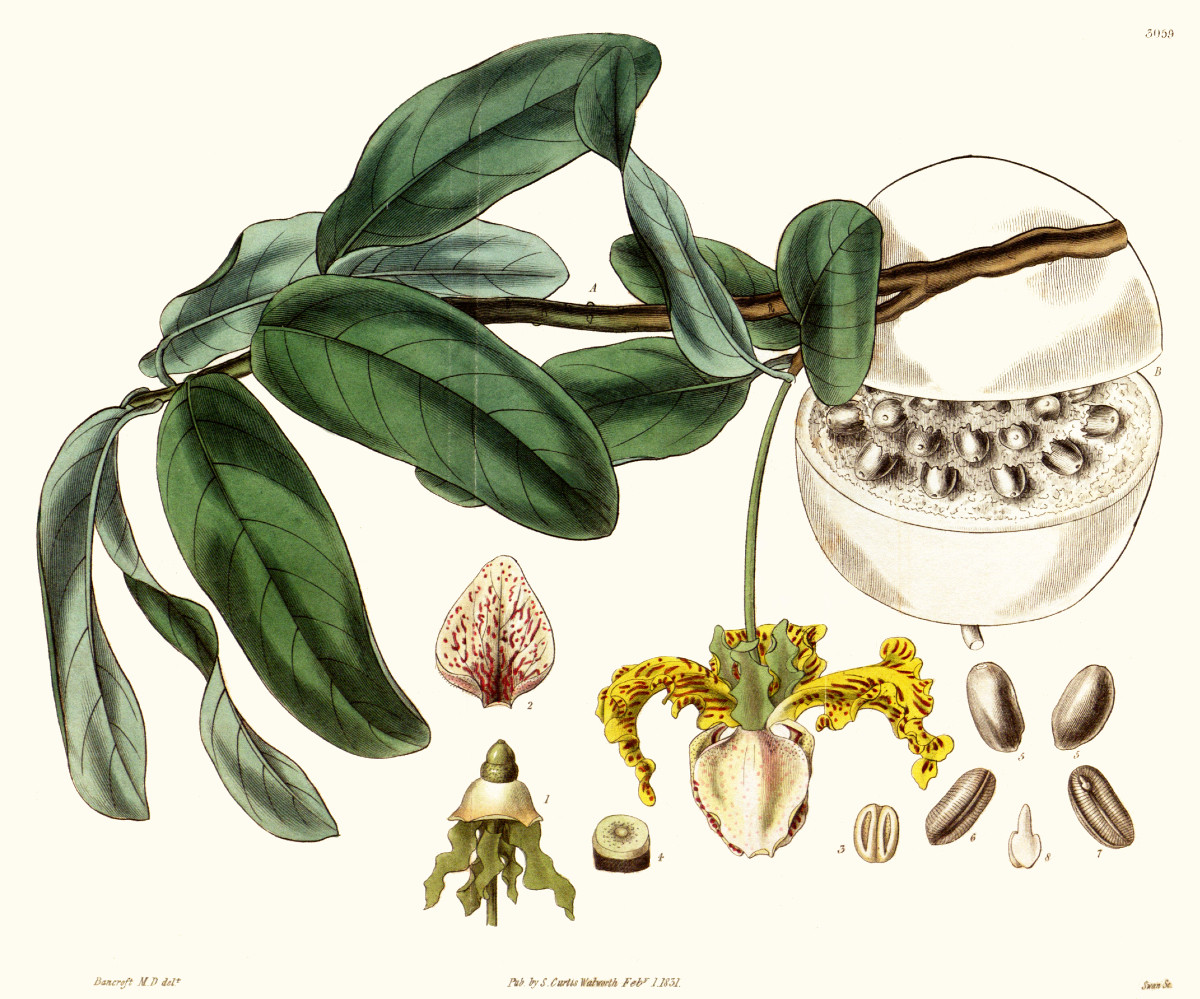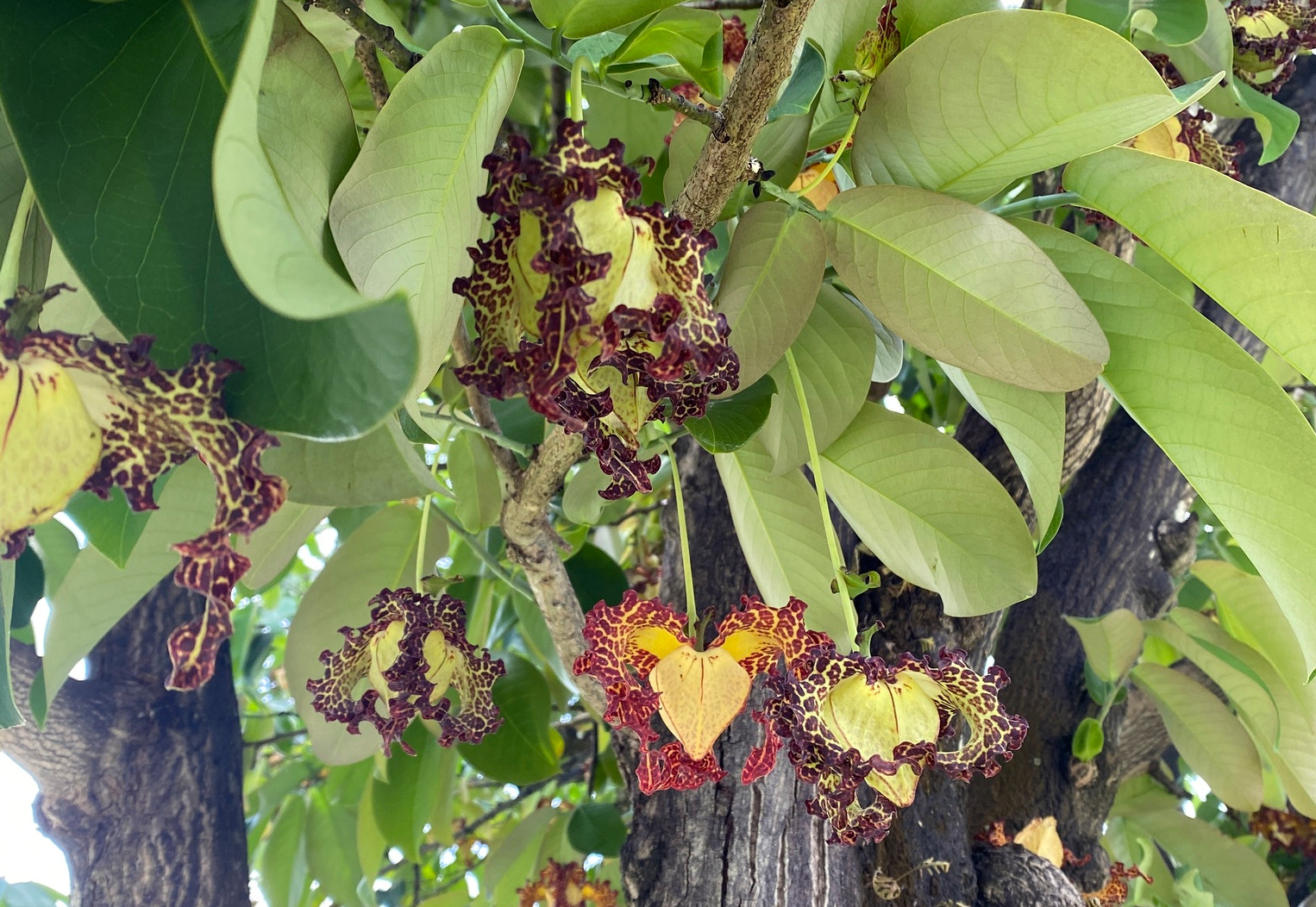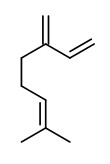Monodora myristica (Gaertn.) Dunal - syn. Annona myristica Gaertn. - Annonaceae
calabash nutmeg, African nutmeg, Jamaica nutmeg, ‘false’ nutmeg, Kalebassen-Muskatnußbaum
Large deciduous tree up to 35m high, native to West Africa, cultivated in the Caribbean; bark grey; leaves alternate, simple, up to 35cm, deep green on the upper side with paler green underneath; flowers suspended on long stalks, showy, large, waxy, fragrant; calyx lobes yellowish, splashed with red, frilled at the edges; petals pale yellow with purplish red spots; fruits large, woody, filled with brown seeds (1-2cm long) embedded in an aromatic pulp. „The seeds are the most economically important part of this tree. They are widely used in West Africa as a substitute for nutmeg in soups, stews and cakes. In traditional medicine, the seeds are used as a stimulant, stomachic and treatment for headaches.“ http://www.kew.org/science-conservation/plants-fungi/monodora-myristica-calabash-nutmeg
The essential oil of M.myristica fruits was mainly composed of monoterpene hydrocarbons, with α-phellandrene (48.8%), α-pinene (15.9%), limonene (8.7%), myrcene (7.9%) and α-thujene (6.3%) as the most important.
[Aromatic plants of tropical central Africa. I. Volatile components of two annonaceae from cameroon: Xylopia aethiopica (dunal) A. Richard and Monodora myristica (Gaertn.) Dunal., Lamaty, G., Menut, C., Bessiere, J.M., Zoilo, P.H., Flavour and fragrance journal, 2(3), 1987, 91-94]
The essential oil of the seeds obtained by steam distillation (4.5%) was found to contain 75% monoterpene hydrocarbons. Major compounds were α-phellandrene (50%), α-pinene and myrcene.
[Volatile constituents of the essential oil of Monodora myristica (Gaertn) dunal., Onyenekwe, P.C., Ogbadu, G.H., Deslauriers, H., Gagnon, M., Collin, G.J., Journal of the Science of Food and Agriculture, 61(3), 1993, 379-381]
M.myristica seeds have high protein (20%) and fatty oil content (21%). This seed oil is rich in glycerides of unsaturated fatty acids like linoleic acid (35%), oleic acid (33%), and arachidic acid (9%).
[A study of the oil content of Nigerian grown Monodora myristica seeds for its nutritional and industrial applications., Ajayi, I.A., Adebowale, K.O., Dawodu, F.O., Oderinde, R.A., Pakistan Journal of Scientific and Industrial Research, 47(1), 2004, 60-65]
Hydrodistillation of fruits of M.myristica gave essential oils with yields of 1.8% (fruits collected in Chad) and 2.7% (Cameroon). Main components were Chad: α-phellandrene (52.7%), limonene (14.9%), β-phellandrene (4.2%), myrcene (5.2%), α-pinene (6.7%), α-thujene (2.4%) and linalool (2.4%); Cameroon: α-phellandrene (67.1%), β-phellandrene (3.0%), myrcene (3.8%), α-pinene (4.2%), limonene (1.8%), α-thujene (1.4%) and linalool (2.1%).
[Composition and cytotoxic activity of essential oils from Xylopia aethiopica (Dunal) A. Rich, Xylopia parviflora (A. Rich) Benth.) and Monodora myristica (Gaertn) growing in Chad and Cameroon., Bakarnga-Via, I., Hzounda, J.B., Fokou, P.V.T., Tchokouaha, L.R.Y., Gary-Bobo, M., Gallud, A., Boyom, F.F., BMC complementary and alternative medicine, 14(1), 2014, 125] PDF

Curtis’s Botanical Magazine, vol.58 [ser.2, vol.5] t.3059 (1831) [E.N.Bancroft] plantgenera.org

Monodora myristica, Trinidad and Tobago (2021) © keishamanaure CC BY-SA 4.0 inaturalist.org




